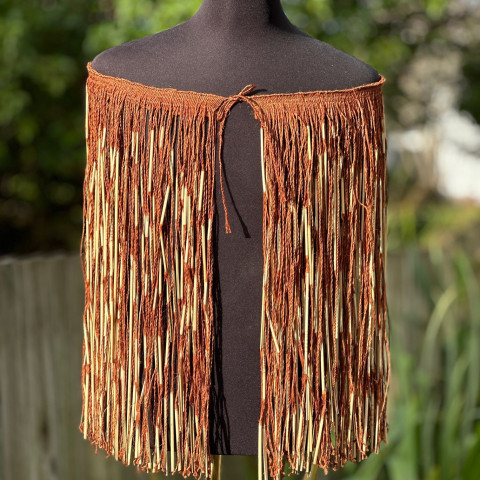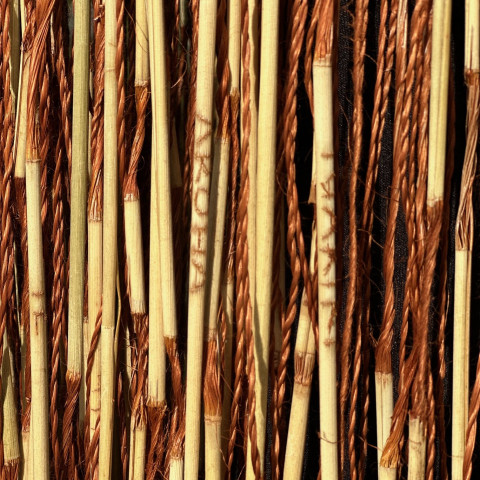Students help create stunning kākahu
Students from Te Whānau o te Kākano have helped to create this stunning kākahu – under the expert tutelage of Kiriana O’Connell.
Kiriana’s vision was to work alongside a group from TWK to create the pōkinikini (small cylinders of dried flax) to adorn and create this kākahu. Students, parents, and whānau involved in the project wrote their dreams and aspirations on different pōkinikini strands/cylinders. He miharo rawa atu.
The name that Kiriana and her tuakana have gifted for the kākahu is ‘Te Kahu Mānawatia’. This name incorporates many whakairo. A ‘kahu’ is a cloak, but it also means to germinate. ‘Mānawatia’ links to Matariki, and it is a kupu that also embodies the idea of looking after or cherishing something previous.
The kākahu was unveiled at Northcote’s recent Matariki celebrations, and has also featured in a prestigious exhibition of Māori art at The Depot Artspace in Devonport, alongside works by Uenuku Hawira, Joe Kemp, Sherie Kemp, Teimah Kemp, Hohepa Peni, Judy Henderson, Kiriana O’Connell, Bronwyn Ngatai-Hawtin, Ngahiwi Walker and Natanahira Te Pona.
‘It is a privilege to work with the next generation of young Māori,’ says Kiriana. ‘In the context of Te Whānau of Te Kākaho, it is about cherishing this time of life and learning with each ākonga. The growth, learning, development, maturity, milestones, aspirations, accomplishments and challenges that take place in these formative five years in a young person’s life are significant, and therefore to be cherished.’
As Kiriana explains, there is a lengthy process involved in creating a kākahu.
‘The last few steps in making our kākahu involved dyeing with natural bark from Manuka and Tanekaha trees, which had been gifted to us. The branches, leaves and seeds from manuka was boiled to create a waiwai (mordant) which fixes the dye to the muka of the pōkinikini strands. This had to be done beforehand as the kākahu needed to be completely dry before being dyed with Tanekaha bark.
‘We used patu to strike the bark which helps release the dye before boiling it for a few hours to develop a rich reddish brown. We also burnt manuka branches to create an ash which is the final step to take the kākahu from a reddish brown to a richer deeper brown. While we waited for the dye to boil we learnt how to whatu muka and had a beautiful kōrero about the experience of our core group of tauira who have been involved in making our kākahu.
‘When the Tanekaha dye had cooled we submerged the kākahu into the dye and waited around 45 mins for the colour to dye our pōkinikini and muka. It was a beautiful burnt sienna colour when it came out of the dye. We then submerged the kākahu into a manuka ash bath to deepen and set the colour.





